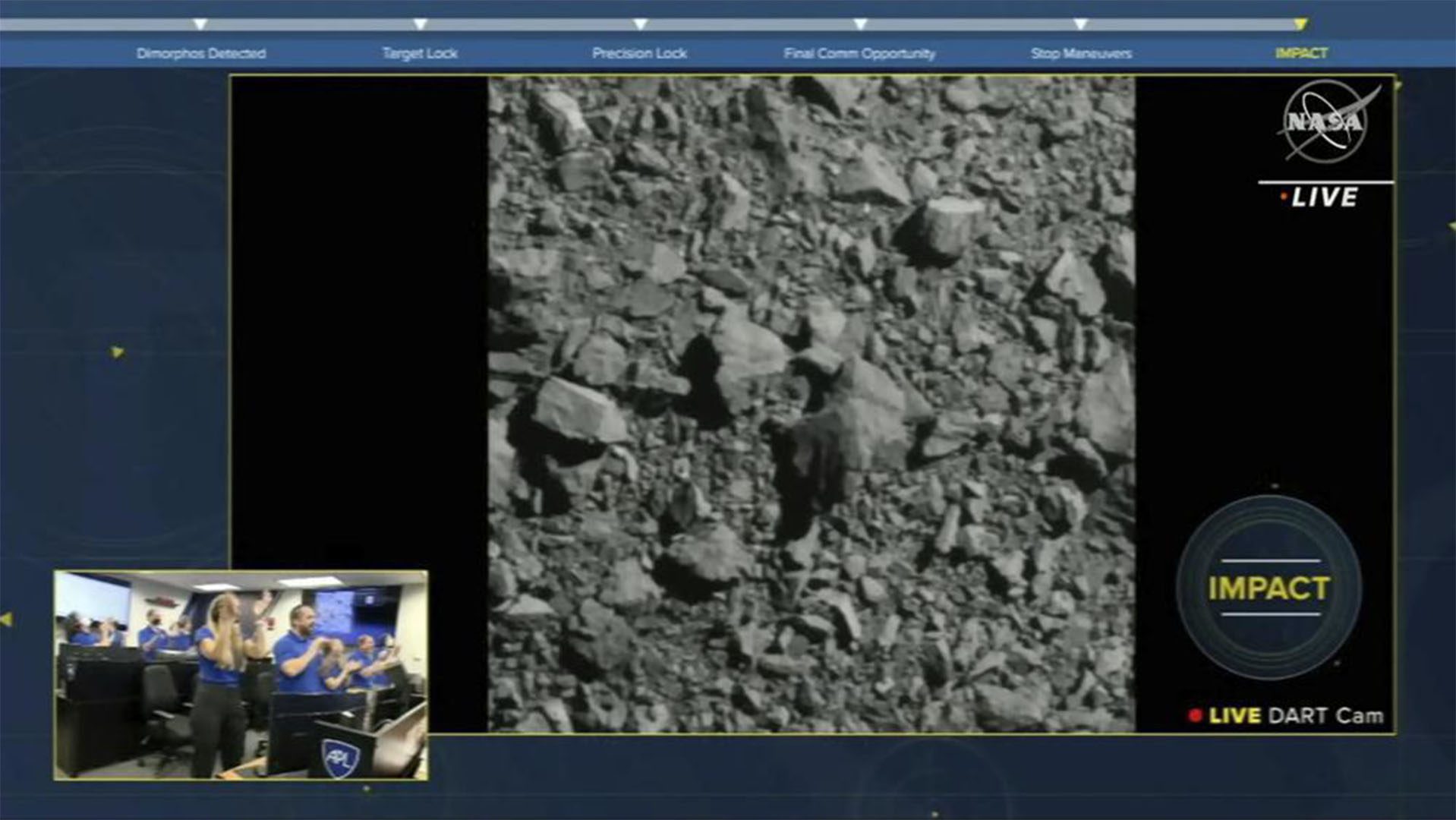On September 26, a NASA spacecraft successfully collided with a small asteroid at about 13,421 miles per hour as a part of the Double Asteroid Redirection Test (DART) mission. On October 11, NASA declared the mission as a success. The mission aims to test out if this technique could deflect a potentially hazardous asteroid in the future.
At 7:14 p.m EST, the DART spacecraft slammed into the Earth asteroid Dimorphos, a small rock that orbits the bigger asteroid Didymos. The collision left an impact crater of about 33 to 65 feet in size. The impact was immediately obvious as DART’s radio signal abruptly shut off.
What’s Next For DART?
Images of the impact and aftermath will soon return to Earth thanks to an Italian CubeSat called LICIACube. LICIACube was packed inside the DART spacecraft until September 11, when it separated from the craft. Three minutes after the impact, the CubeSat flew by Dimorphos to capture images and video. These images will be streamed back to Earth in the coming days and weeks, depending on the spacecraft’s status and availability of time on the Deep Space network.
Additionally, a network of ground-based telescopes will observe the binary asteroid system in the next few weeks to measure the change in the period in the orbit of Dimorphos around Didymos. The Hubble Space Telescope and James Webb Telescope will also observe the asteroids to see how much the orbital period of Dimorphos changed. These measurements and observations will determine if DART was successful in changing the course of Dimorphos.
In four years, the European Space Agency’s Hera mission will also study Dimorphos, measuring the physical properties of the moon to examine its orbit and DART’s impact.
An animation of the expected collision of the Double Asteroid Redirection Test spacecraft and Dimorphos; Photo Credit: NASA/Johns Hopkins/APL
Behind DART’s Technology
DART, about the size of a vending machine, launched in November 2021 from a SpaceX Falcon 9 rocket out of the Vandenberg Space Force Base in California. Its technology was developed and led for NASA by Johns Hopkins University’s Applied Physics Laboratory.
The DART mission marks the first-ever space mission that demonstrates asteroid deflection by kinetic impactor. DART used software called SMART Nav to target Dimorphos and adjust the spacecraft’s trajectory. NASA scientists were prepared for 21 different outcomes and were prepared to make last-minute adjustments like changing camera settings and telling the spacecraft to change the targeted objects. Scientists were also prepared if DART missed Dimorphos. Luckily, the mission went as planned.
As Lindley Johnson, NASA’s Planetary Defense Officer, explained, “DART’s success provides a significant addition to the essential toolbox we must have to protect Earth from a devastating impact by an asteroid…This demonstrates we are no longer powerless to prevent this type of natural disaster.”
Check out more exciting space events happening this fall HERE.








